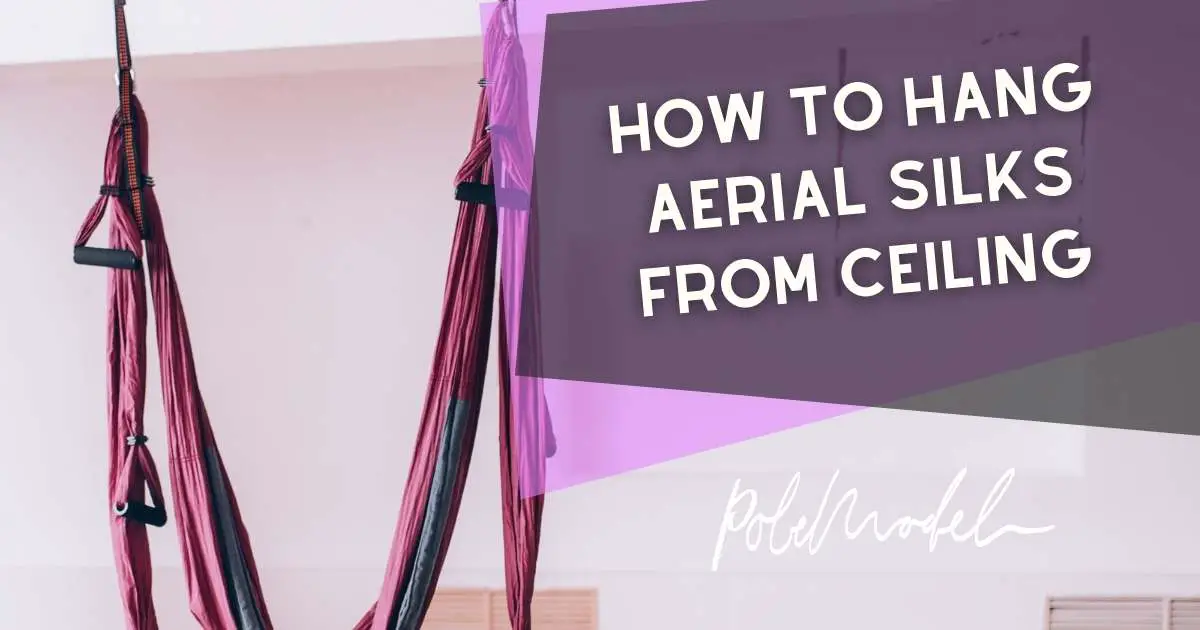The practice of aerial arts involves acrobatic work at various heights and is potentially dangerous. Among the most common injuries are;
- shoulders and back pain due to overuse,
- bruises,
- pulled muscles,
- fabric burns,
- dizziness/nausea (from spinning or being upside-down).
And, to be a bit extreme, getting a sprain, breaking your bones, paralysis, and even death are all possible risks…
Despite all of this, aerial beginners and newbies still agree to participate in aerial hoop at their own risk (in other words, if something goes wrong, that is on you!).
So, fully understanding the dangers associated with aerial hoop before diving in would be a smart move. Luckily, we have included the main safety concerns you need to be aware of all in one place, so you won’t have to search aimlessly before deciding to take on a new class.
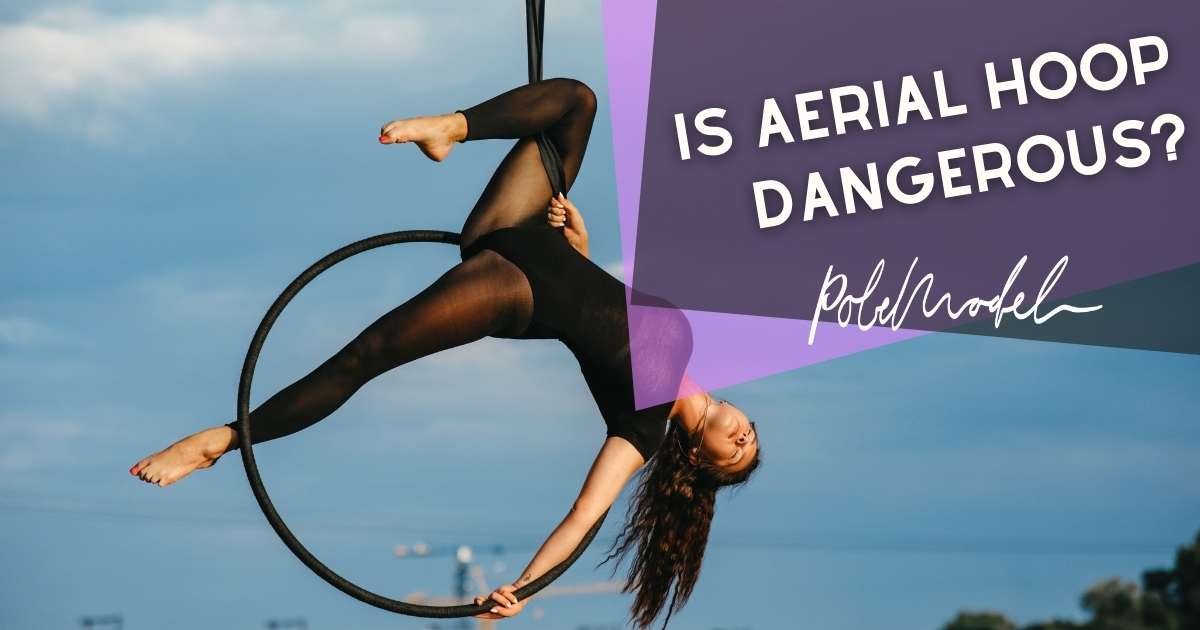
So, Is Aerial Hoop Dangerous?
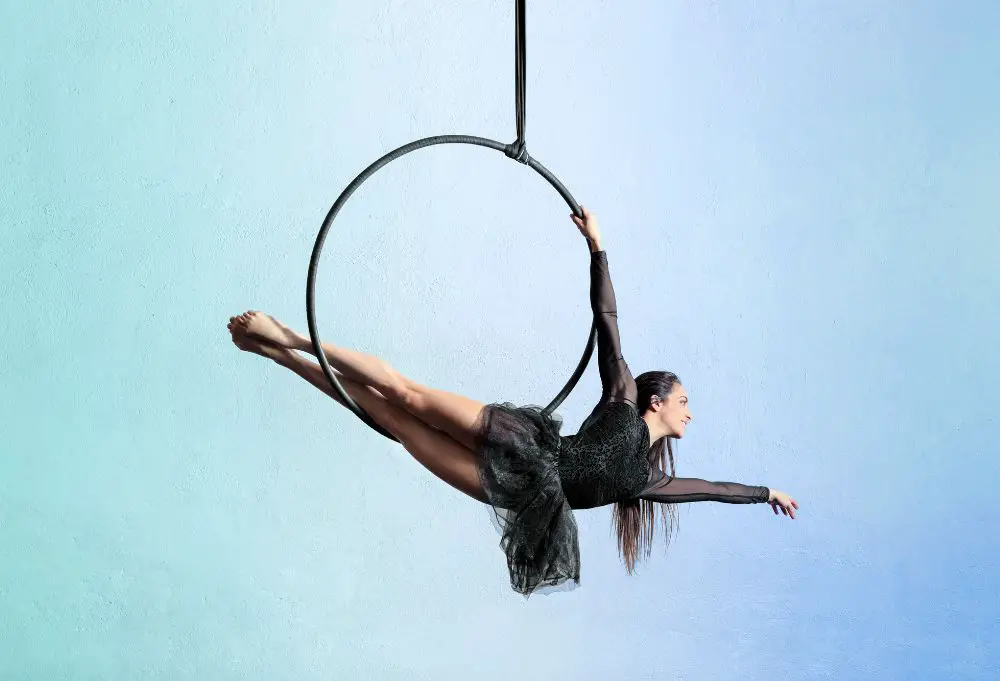
Given what we have mentioned above, yes, it definitely can be! Especially when not practiced correctly. However, as you build confidence and work on your technique, the risks will be less likely. So, it is recommended that you take a few aerial classes in a studio before going out to buy your own equipment.
What Apparatus Would You Need To Practice Aerial Safely?
The most common aerial apparatus include:
- Aerial silk
- Aerial hammock
- Aerial ring
- Flying trapeze.
Finding a good studio with an experienced teacher will teach you the correct form and techniques which will, in turn, reduce the risk of injury when practicing on your own.
Even after taking a few aerial classes, you will need to know the safety precautions and practices. A good instructor will go over these with you at your first class, but let’s do a quick recap so you don’t have to search for them.
What Can You Do To Ensure Your Safety At An Aerial Hoop Gym/Studio?
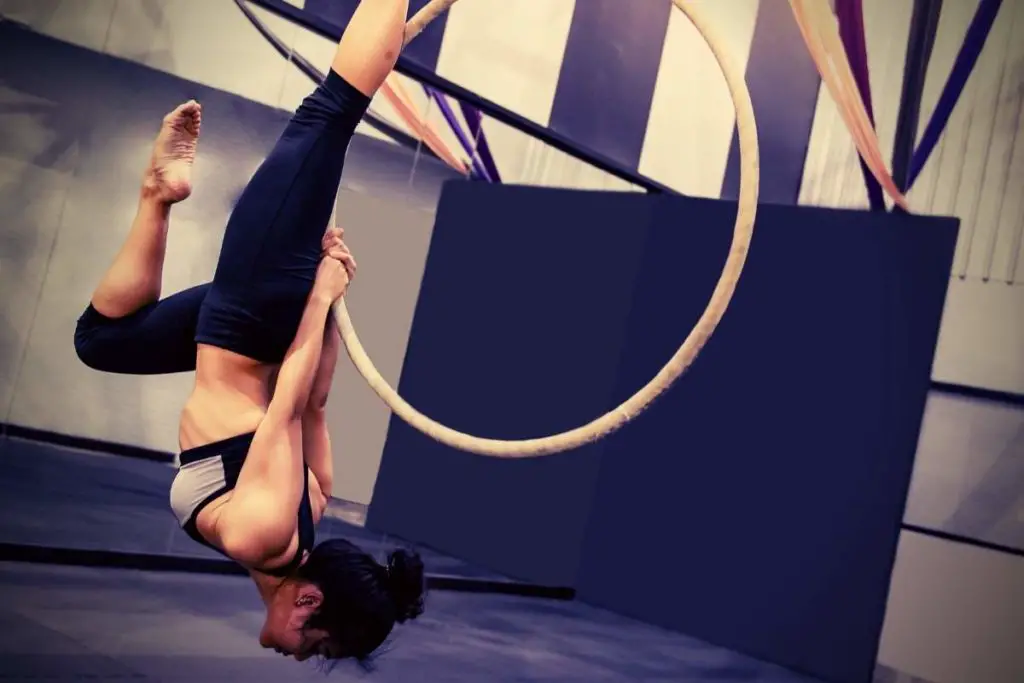
It is ultimately up to you to ensure your safety when you visit an aerial studio. It is therefore vital that you adhere to the safety policies set out for that specific establishment. If you are unsure of what those are, here are a few general rules:
- Always warm up your muscles before attempting any aerial skills.
- Never attempt any acrobatics while under the influence of drugs or alcohol.
- Mastering the basic skills is imperative before progressing to skills requiring more endurance, strength, understanding, and stability.
- Before progressing to a more difficult skill, ensure that you are able to execute a pose or sequence with proper body positioning, control, and strength.
- It is important to practice new skills low to the ground while your mind and body adapt to the new movements. Only after successfully executing the skill (with control) many times on the ground should you attempt it at greater heights.
Instructor approval is generally required before practicing skills that weren’t taught by your instructor. Jumping into a trick you say on Youtube, without supervision, is also typically frowned upon.
How To Safely Learn Aerial Hoop?
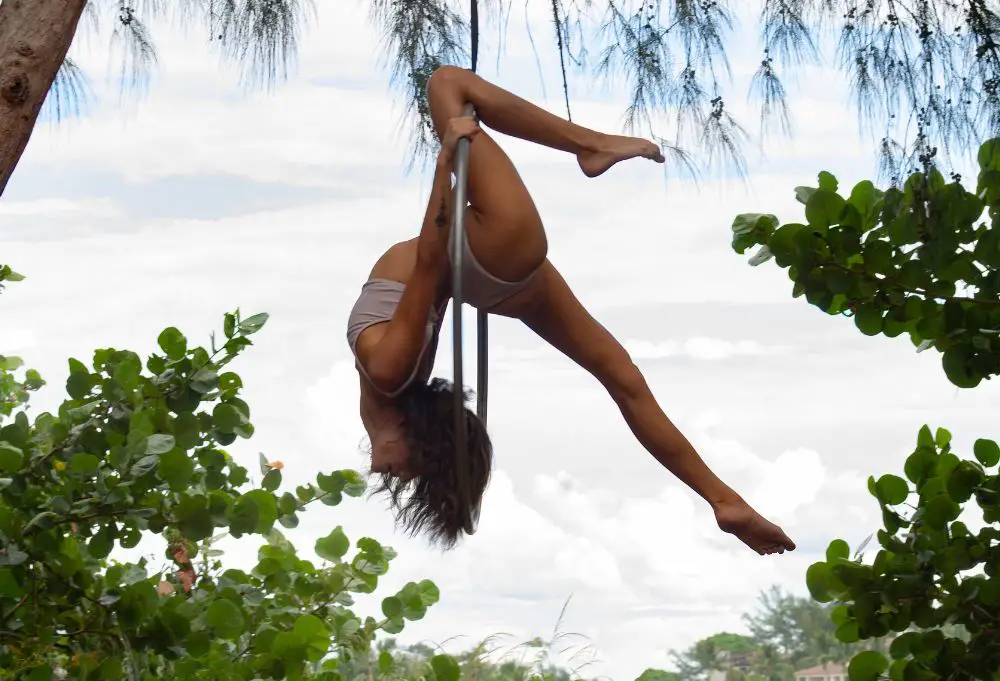
Trainers who specialize in aerial sports will agree that learning hoop by yourself as a total newbie is a bad idea. Learning the sport on your own can be very risky! In a pole dance class, you can move freely while exercising safely on the ground. On a hoop, however, this is not possible. With aerial hoop, inverting is expected in your very first lesson.
Even at a low height, aerial sports can be dangerous. The fact that you can land on your neck with a wrong movement becomes apparent. This is especially true at the amateur level, as you have little knowledge yet of the mechanisms used in each exercise. This is why it’s important to train with an experienced trainer until you get the techniques down. Even then, you should always have a thick safety mattress underneath the hoop.
While there are many manuals and YouTube videos available, which may be helpful, at least as a reference, nothing can replace an experienced trainer. The trainer will be able to spot your weaknesses and mistakes. It is crucial to learn movements with the correct technique and not to adopt bad habits.
Is It Safe To DIY Rig An Aerial Hoop In My House?
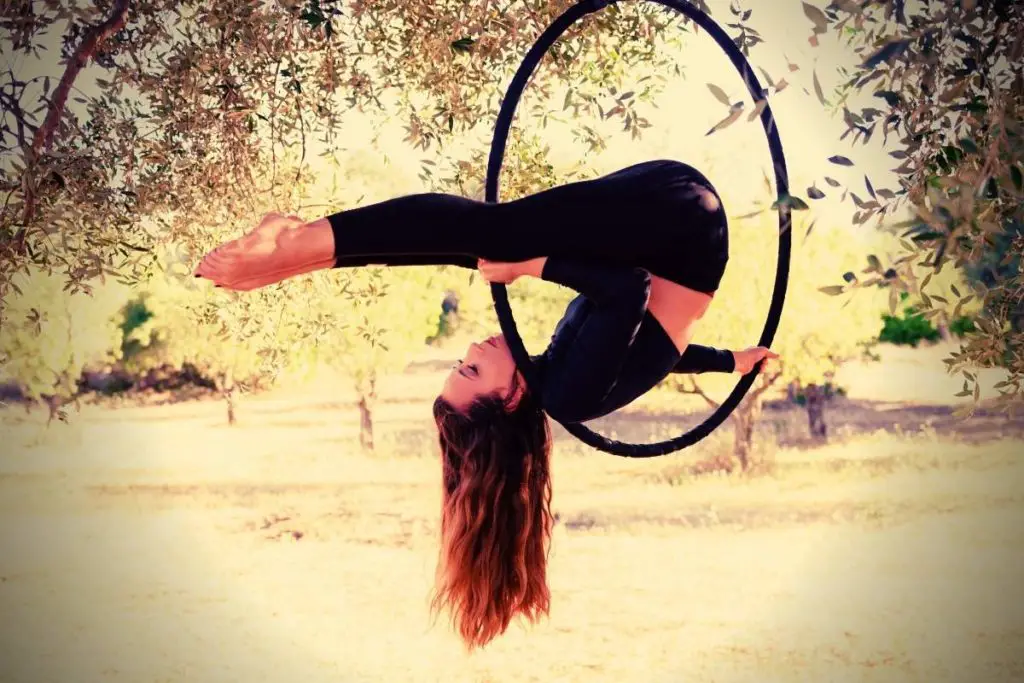
Once you’ve taken a few classes and are comfortable with best practices, yes it is. If you are totally new to the sport, however, it is recommended that you seek supervision from an experienced aerialist before setting up an aerial an aerial hoop at home.
Additionally, there are costs associated with it. Many houses are not built to support the dynamic weight load of a human doing aerial work. An aerial apparatus in motion produces far more dynamic weight force than a person’s actual weight. So, you may want to enlist the help of a structural engineer who can evaluate your home’s structure to let you know where the safest location would be to install an aerial point.
Aerial hoop is a personal sport. Your safety while at home will be dependent on you. So, be sure to listen to and respect your body. Only you can know when you are confident enough to start using an at home set-up, and only you can know when you’ve had enough. Never push yourself past your body’s safe working limit. Aerial hoop can be practiced safely, but it will be up to you to ensure you cover your role in that endeavor.
References
For more quality content like this, be sure to check out the Pole Model Youtube Channel!
See you there 🙂




